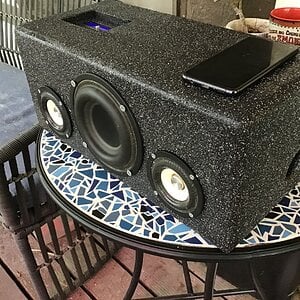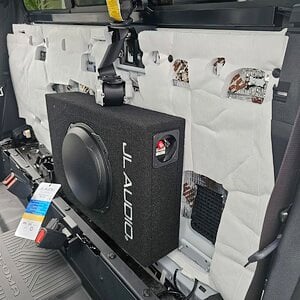Clayon91 10+ year member
Junior Member
Hey guys, I am 15 gonna be 16 in a couple months, I got me a really good condition '91 Ford F150 reg. cab. I wanna hook up a nice sound system for when I can start cruising. I would like to have 2, 8'' subwoofers, an amplifier for the subs, and replace the stock speakers and deck. My first question is: what all do I need if I wanna have 2 subs? how many channel amp do I need? When I replace the stock speakers do they need to be run off the amp? And what about capacitators? And is there anything else I would need? I know all my newby questions are probly irritating, but I wanna do this right. Any help would be greatly appreciated.


